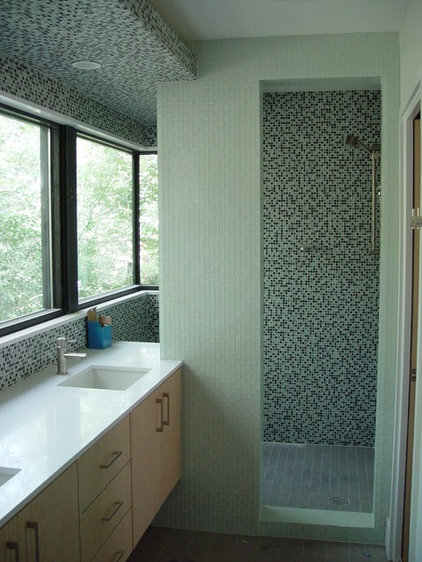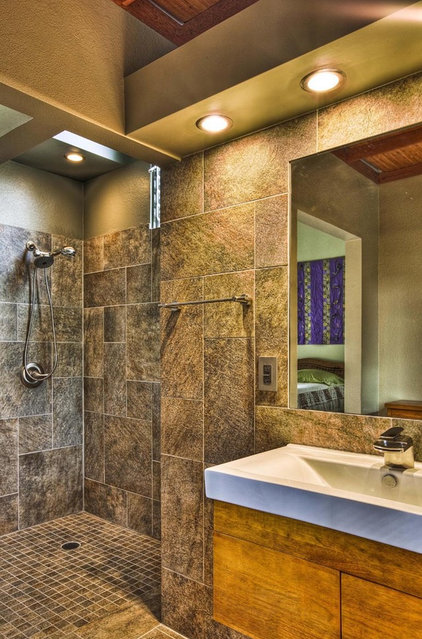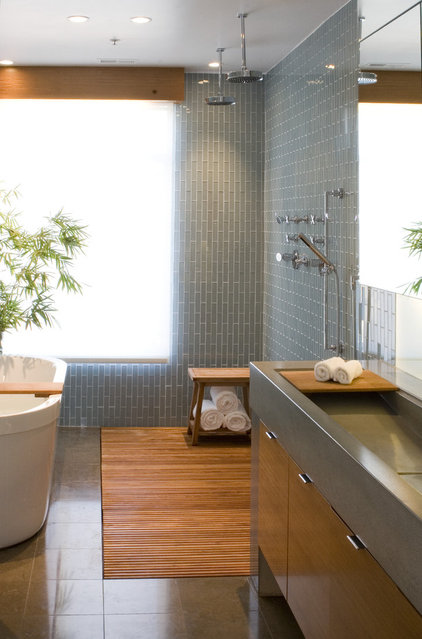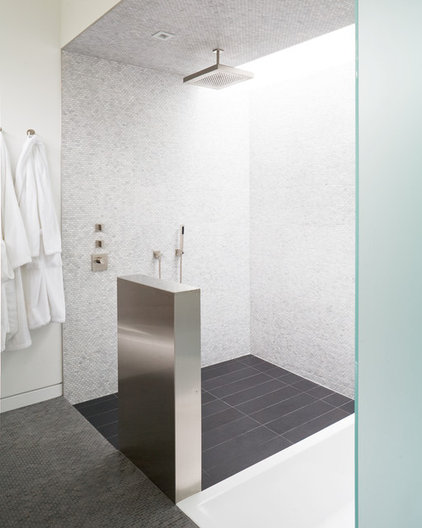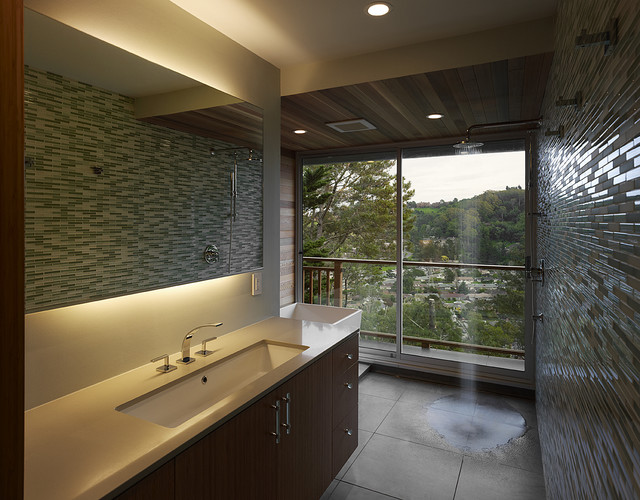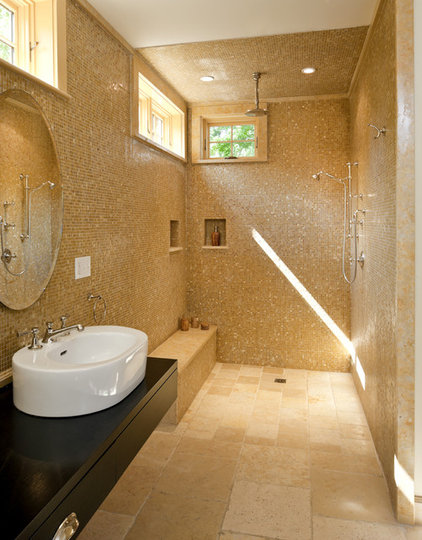Universal design and an open bathroom feel are just two benefits of doorless showers. Here's…
Doorless Showers Open a World of Possibilities
I'll never forget my first experience with an open shower. On a French-class trip to Paris at the innocent age of 14, I arrived at my hotel tired, jet-lagged and longing for a good, hot soak. I pushed open the bathroom door and looked around, flummoxed. Where on earth was the bathtub? Then I glanced up and gaped: I was standing in the shower, which was just a handheld faucet and a grate in the floor — no tub, no door, no curtain, no threshold. The entire time I was there, I never mastered the art of soaping up and rinsing off without drenching the whole room.
It turns out, the French were onto something. Doorless showers have become a design darling in recent years. Not only do they create an open, expansive feel in a bathroom, but they also lend themselves well to universal design and aging in place. And while they're a little more sophisticated now than my Parisian puzzler, they still require careful planning. Here are eight things to consider if you're thinking about the doorless approach.
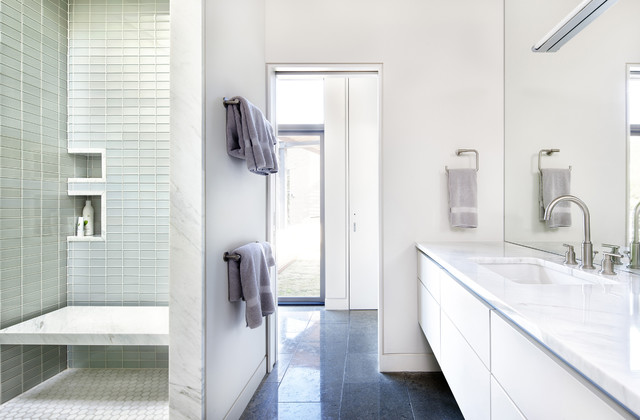
by Alterstudio
|
|
2. Consider a corner location if possible. Orient the shower in a corner that faces away from the other bathroom zones. Not only does this guard against spraying water, but it also preserves some measure of privacy (more on that in a minute).
|
|
7. Make peace with a loss of privacy. If you don't like to feel exposed — even when you're alone in the house — an open shower may not be for you. Even if you don't have a bare window wall such as the one in this bathroom, you'll be on full view from the rest of the space. Consider a frosted or textured glass half-wall as a compromise if modesty is an issue.
|
8. Integrate the design with the rest of the space. Because there's no concrete border between an open shower and its surroundings, choose materials that will create a smooth transition. The wall tile in this bath continues seamlessly into the shower, with only a change in ceiling materials to provide a visual stopping point.


